Medellín: Colombian city with a notorious history
Medellín is the second largest city in Colombia with about 4 million people. It is situated at 1,500 m (4900 ft) elevation, which in equatorial latitudes (it’s at 6°N) is the altitude for an ”eternal spring” climate. Not too hot, not too cold—it’s just right!
My first post explained the tectonic setting of Columbia: https://landscapes-revealed.net/bienvenidos-a-colombia-welcome-to-the-northwest-corner-of-south-america/. In this post, I’ll focus on the north-central part of Colombia in Medellín, the first stop in my journey.
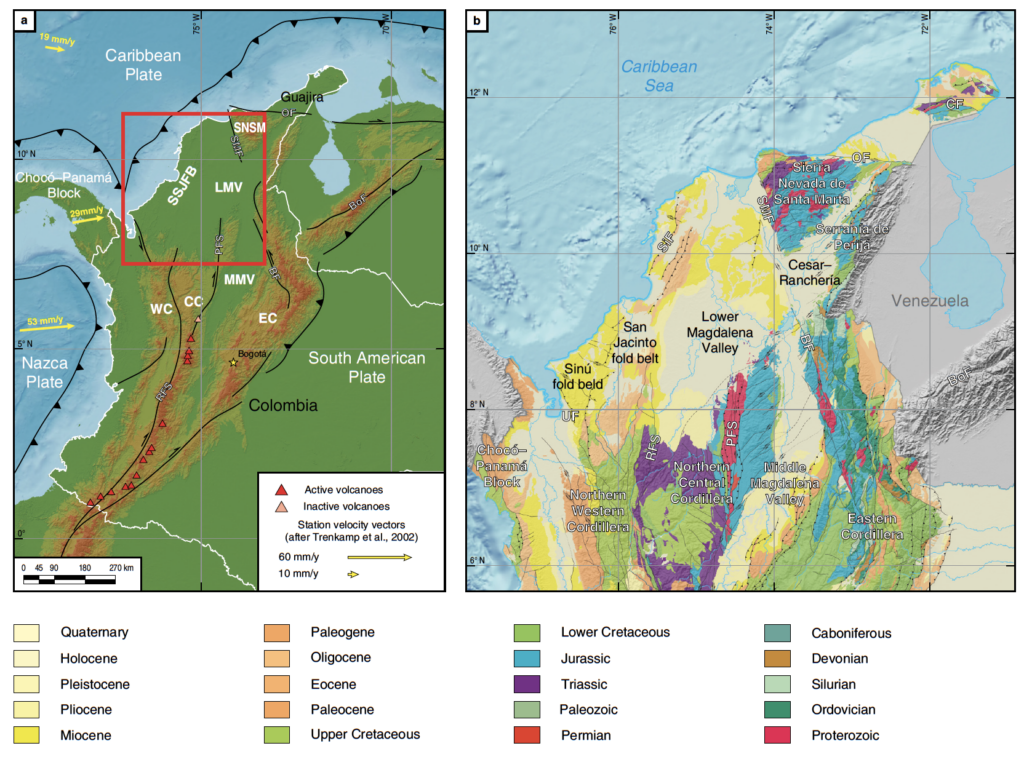
Medellín is located just south of the red box in the Central Cordillera (CC). Notice that it is north of the area with active volcanoes. As explained in my first post, volcanism is suppressed to the north, where the oceanic plate is descending at a very shallow angle. Medellín is also in a region with fewer earthquakes than some other parts of Colombia (seismic map in my first post—link provided above).
(b) This map shows the age of geologic units in the northern part of Colombia. The colors indicate that the rocks in Colombia span a large range of ages: Proterozoic rocks are ~1 billion years old; Ordovician–Permian are periods in the Paleozoic Era (540–250 million years ago); Triassic–Cretaceous are periods in the Mesozoic Era (250–66 million years ago); Paleocene–Quaternary are periods in the Cenozoic Era (66–0 million years ago), although Pleistocene and Holocene are epochs in the Quaternary period (2.6–0 million years ago). The young Quaternary ages are sediments (not yet turned to rock) deposited in low-lying valleys and coastal plains.
The north–south stripes of color are various crustal pieces called terranes—fault-bounded blocks that have been displaced from their place of origin. During the millions of years of active subduction, processes that moved crustal blocks have included offshore volcanic island chains that collided with the continent, and pieces of ocean and/or continent that moved parallel to the coast by the sliding motion of strike-slip faults. The San Andreas fault in California is an example of a strike-slip fault.
Medellín is located in a valley within the Northern Central Cordillera in the area of green-colored Lower Cretaceous rocks. The figure above is from Volume 3 of the Geology of Colombia series that is available online: https://www.researchgate.net/project/The-Geology-of-Colombia-Multivolume-book.
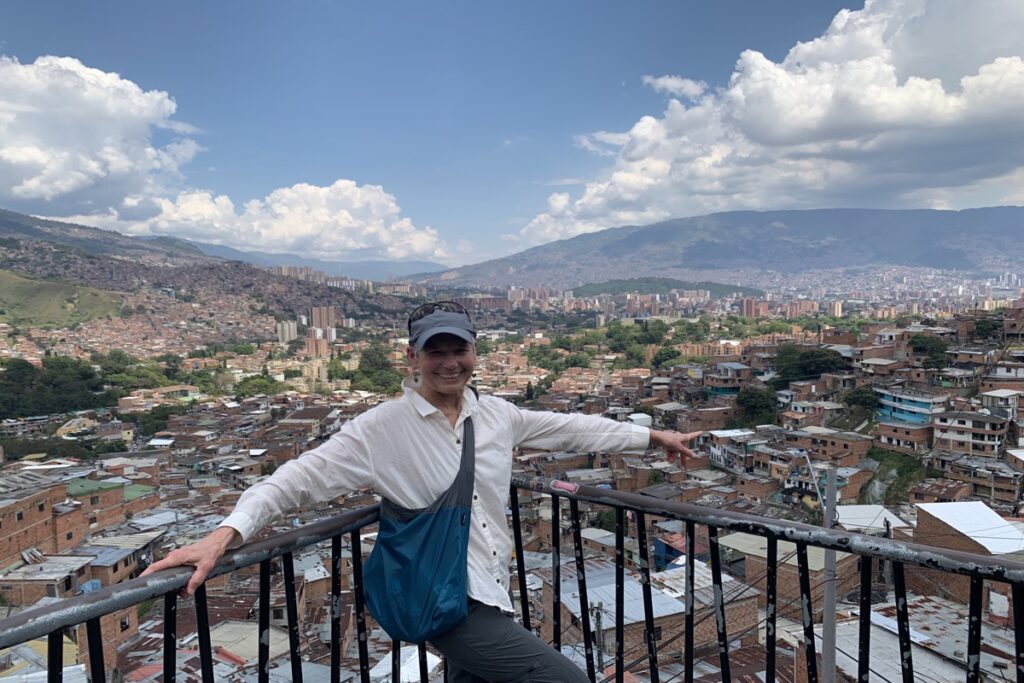
My main goal in Medellín was to study Spanish for a week, and to learn more about the region’s history and culture. The one geologic excursion I had planned, to El Peñón de Guatapé (the Rock of Guatapé), was not successful because of a traffic stoppage—due to a bicycle race—on the route eastward from Medellín. I hadn’t realized that bicycling is so popular in Colombia—it is the second most popular sport after soccer. They are extremely proud that in 2019 Colombian Egan Bernal won the Tour de France, becoming the first Latin American to win this prestigious bicycle race.
Medellín’s history of violence and recovery
Thirty years ago Medellín was considered the most dangerous city in the world. If you’ve seen the Netflix series Narcos, you know about Pablo Escobar, the notorious drug lord and narco terrorist who was the founder and sole leader of the Medellín Cartel. He was killed in 1993, and although this was not the end of violence, it began the evolution toward creating the thriving city we see today. There remain problems, of course, but the city is moving forward in a positive direction.
The city has, in the past 25 years, built an impressive network of metro, bus and cable-car lines. Life is easiest in the valley where services are readily accessible. Life is more challenging on the steep valley slopes, where people displaced from their countryside homes by guerrilla, paramilitary and even government violence have occupied small parcels of land to construct their basic dwellings.
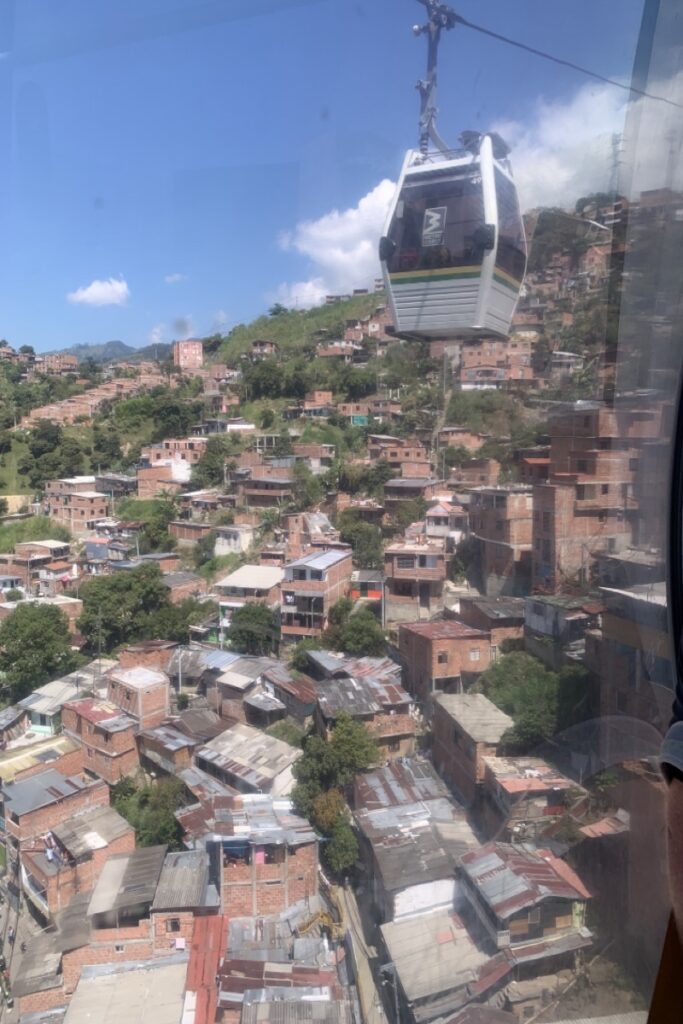
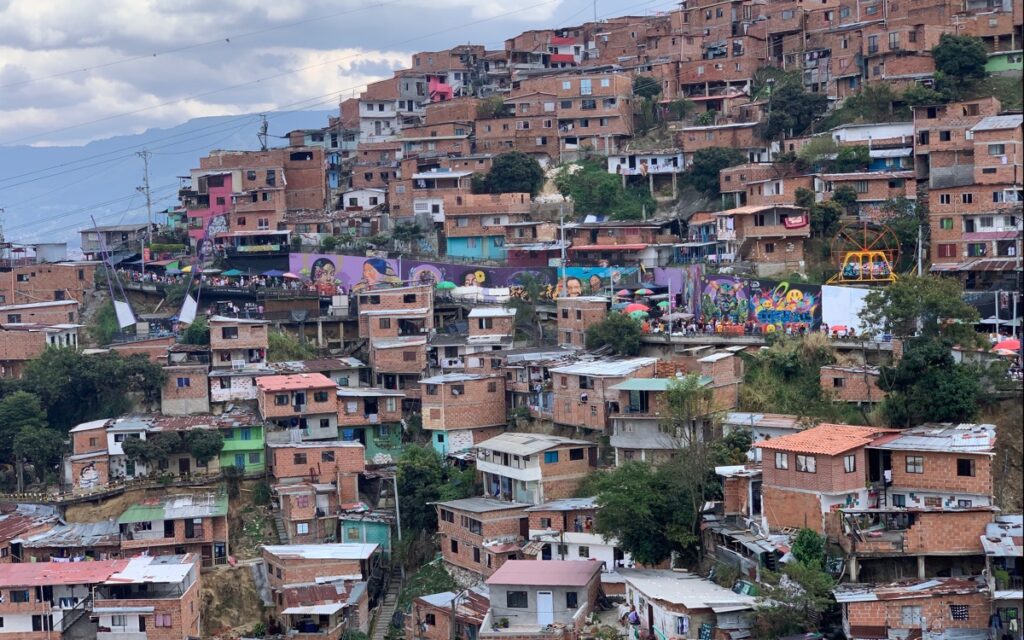
More art!
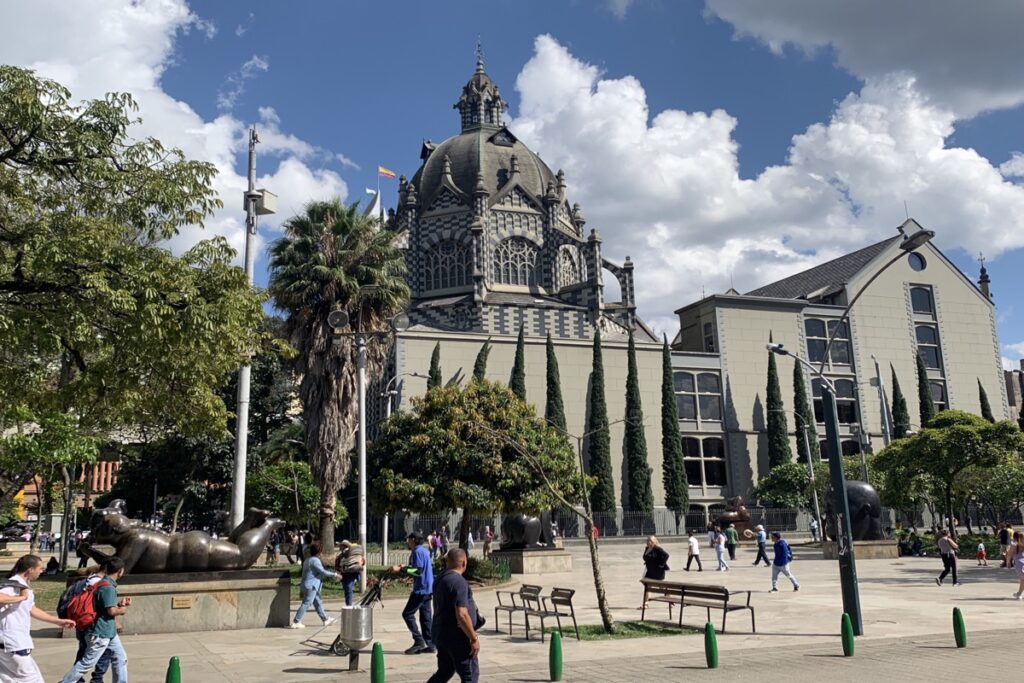



Thanks for paving the way for future travelers with new information of a previously dangerous place.
You are welcome—thanks for reading!